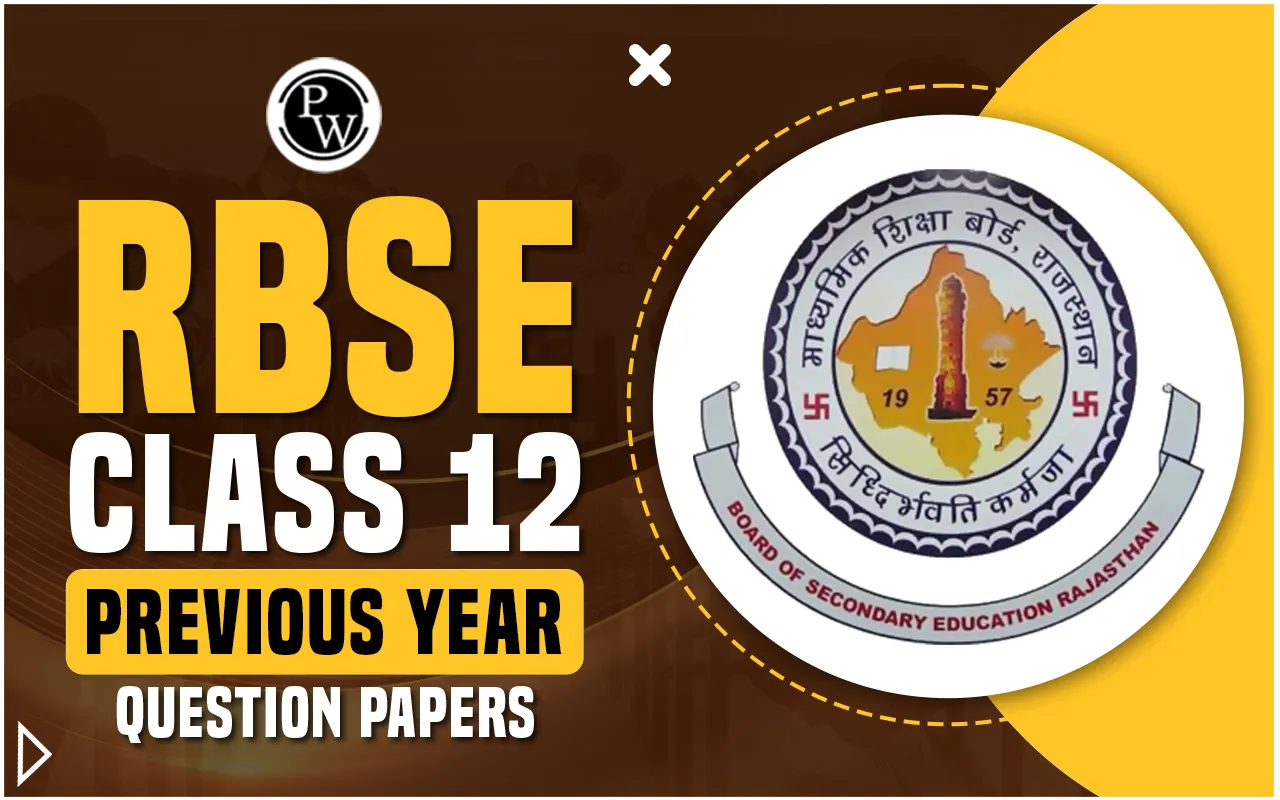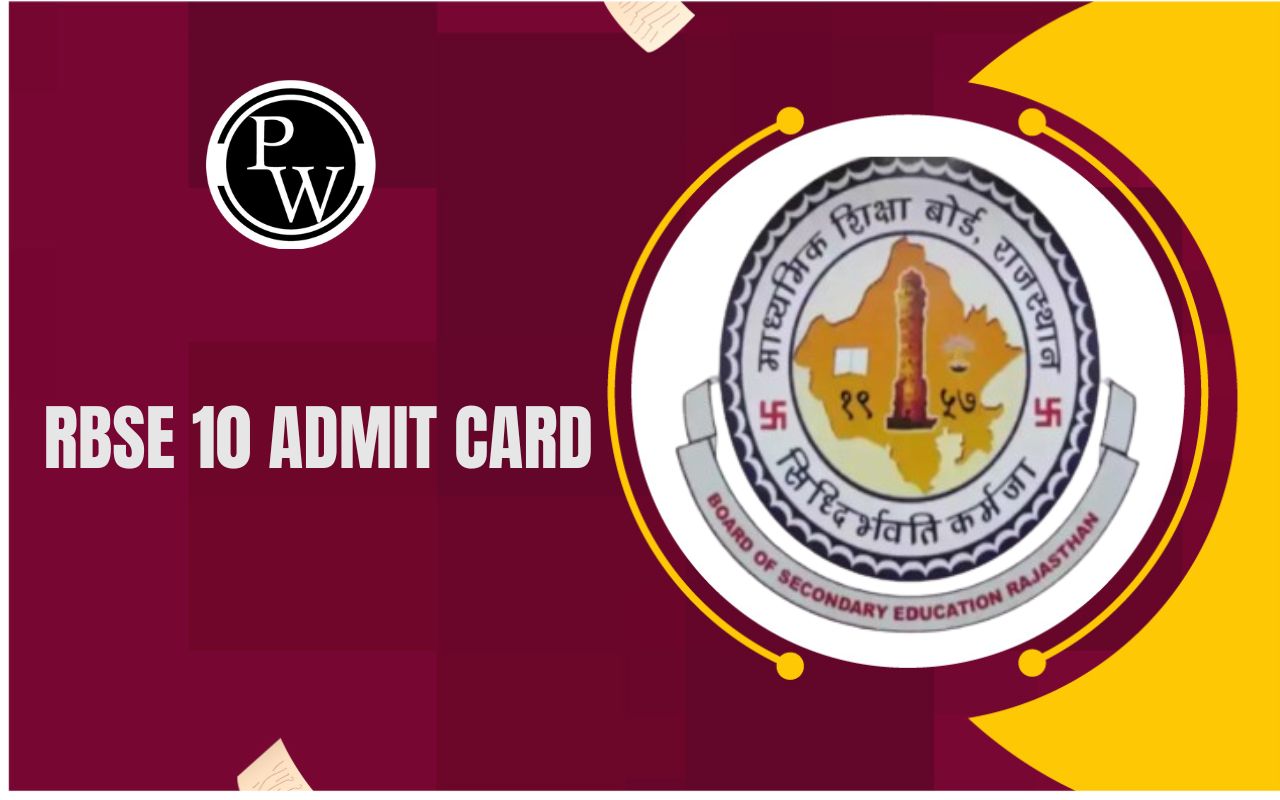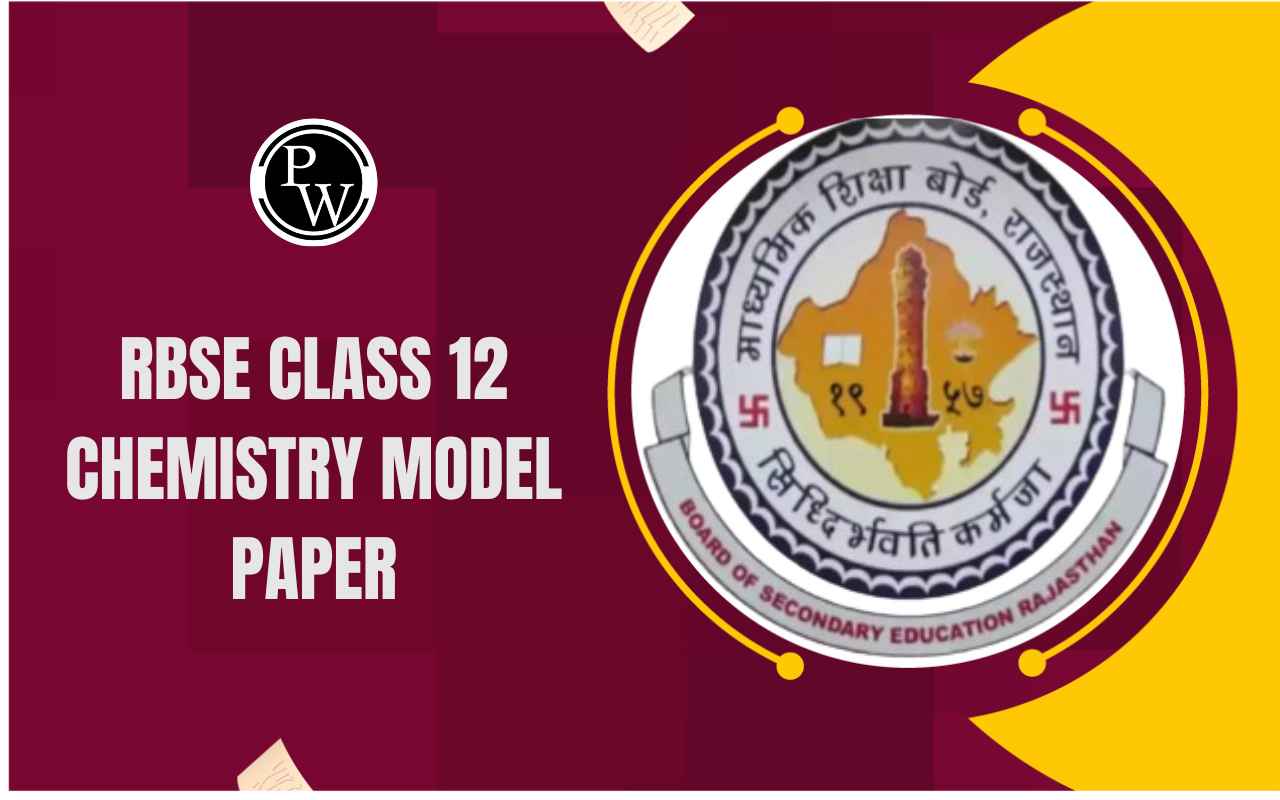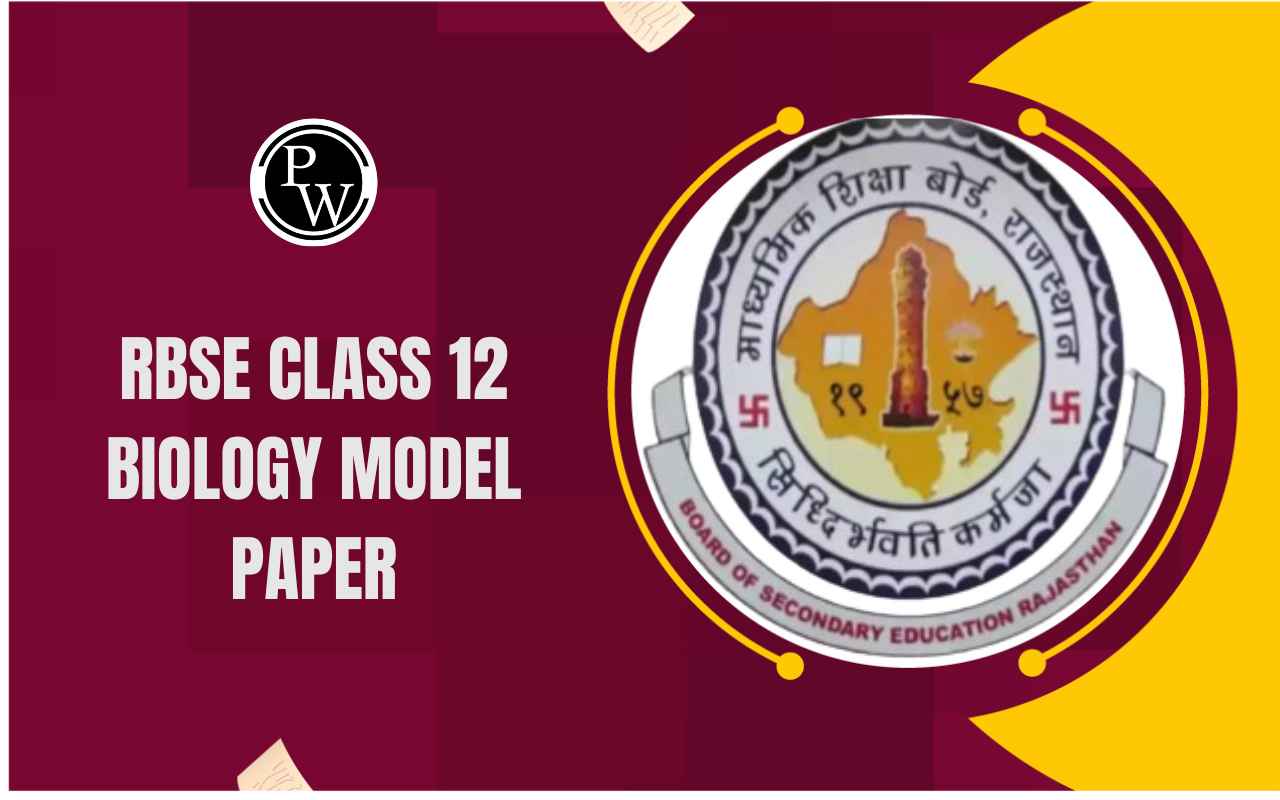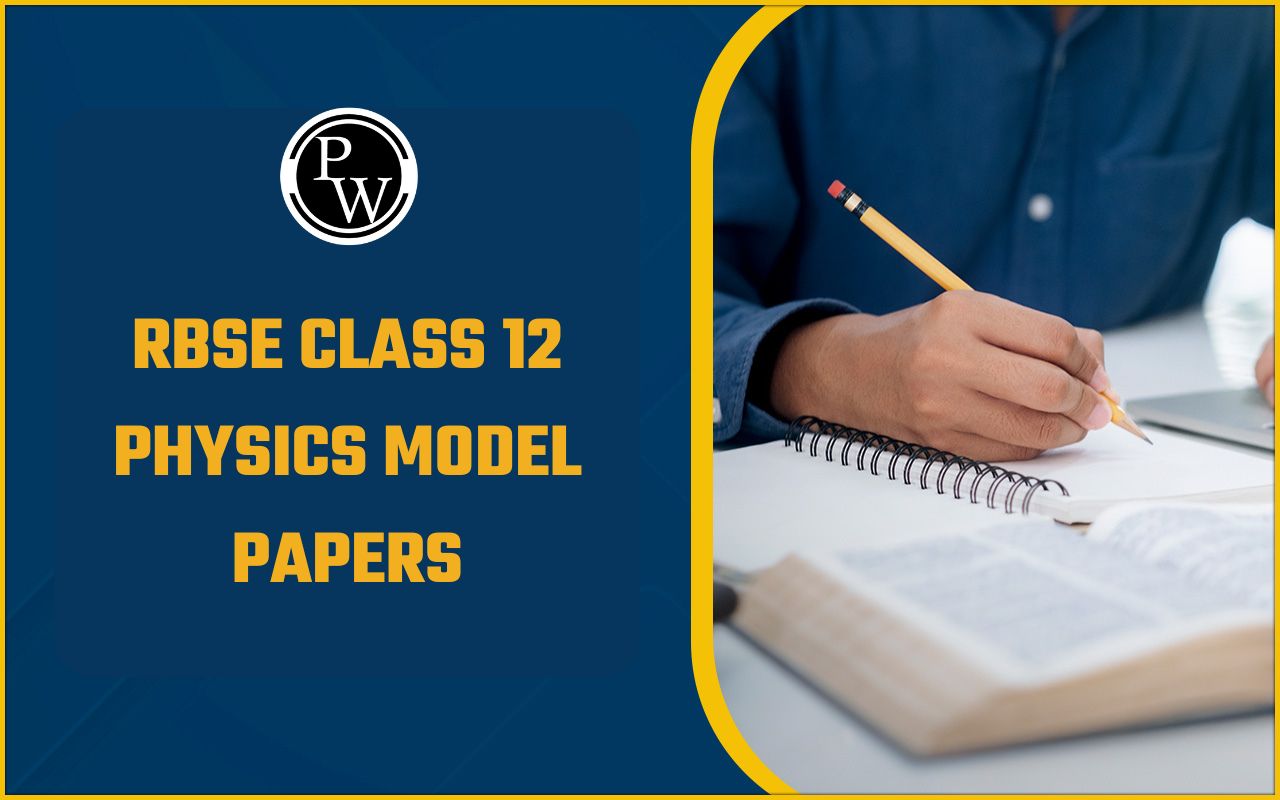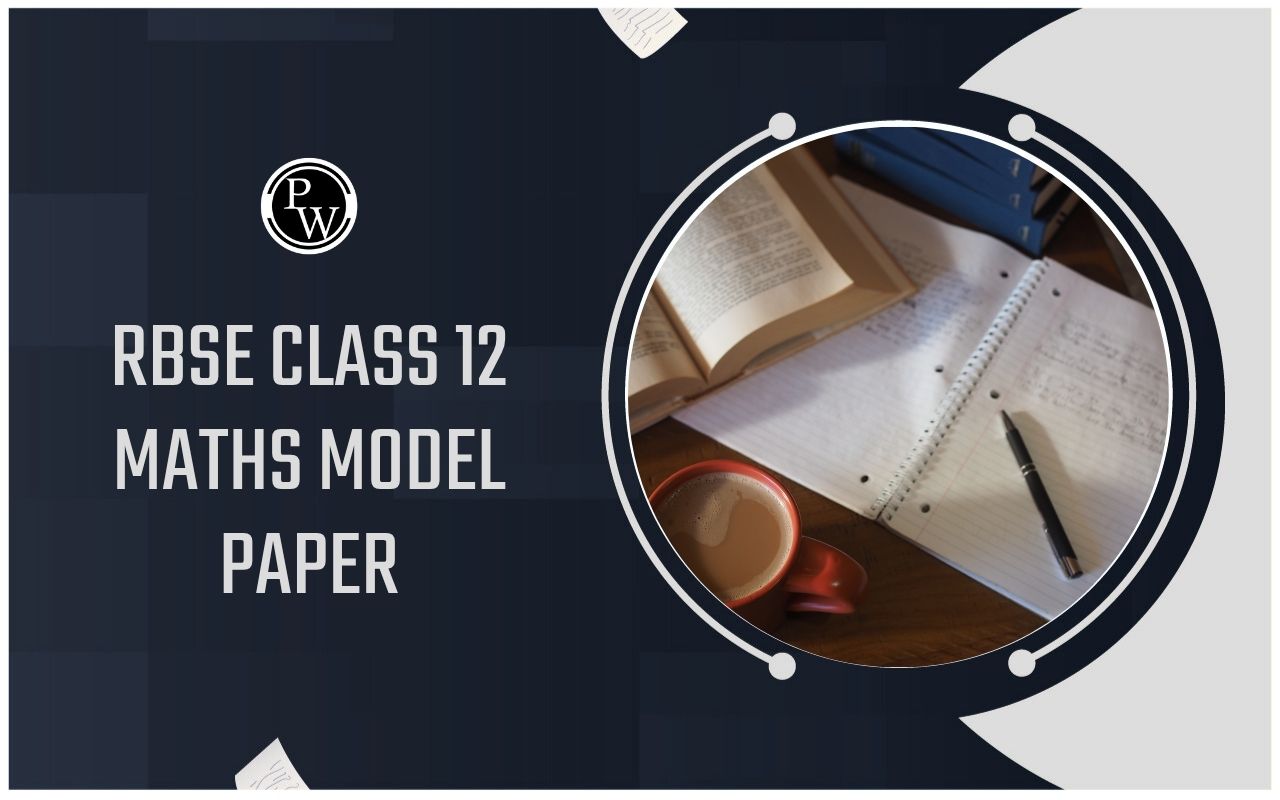

RBSE Class 12th Physics syllabus is designed to provide students with a solid foundation in fundamental concepts such as mechanics, optics, thermodynamics, and modern physics. Understanding the syllabus thoroughly is essential for effective preparation, as it helps identify key topics and focus areas.
The exam pattern generally includes theory papers and practical examinations, testing both conceptual clarity and application skills. Referring to previous year papers is highly recommended, as it helps students familiarize themselves with question types, difficulty levels, and important topics. A clear understanding of the syllabus and exam pattern boosts confidence and enhances overall performance in the final exam.
RBSE Class 12th Physics Syllabus
The RBSE 12th Syllabus for Physics covers essential concepts that form the foundation for higher studies and competitive exams. Understanding the syllabus helps students align their preparation with the exam pattern and practice using previous year papers. Below are the chapters included in the syllabus, designed to strengthen both theoretical knowledge and practical application in Physics.
|
RBSE Class 12th Physics Syllabus |
|
|
Chapter No. |
Chapter Name |
|
1 |
Electric Charges and Fields |
|
2 |
Electrostatic Potential and Capacitance |
|
3 |
Current Electricity |
|
4 |
Moving Charges and Magnetism |
|
5 |
Magnetism and Matter |
|
6 |
Electromagnetic Induction |
|
7 |
Alternating Current |
|
8 |
Electromagnetic Waves |
|
9 |
Ray Optics and Optical Instruments |
|
10 |
Wave Optics |
|
11 |
Dual Nature of Radiation and Matter |
|
12 |
Atoms |
|
13 |
Nuclei |
|
14 |
Semiconductor Electronics: Materials, Devices and Simple Circuits |
RBSE Class 12th Chemistry Syllabus
Detailed Overview of RBSE Class 12th Physics Syllabus
Below, we have provided a detailed overview of the RBSE Class 12th Physics Syllabus -
1. Electric Charges and Fields
-
Explains electric charge, conductors, insulators, Coulomb’s law, and electric field concepts.
-
Covers electric field lines and Gauss’s law with applications.
2. Electrostatic Potential and Capacitance
-
Discusses electrostatic potential, potential energy of charge systems.
-
Covers capacitors, capacitance, and effects of dielectrics.
3. Current Electricity
-
Deals with electric current, Ohm’s law, and resistivity of materials.
-
Includes EMF, internal resistance, and Kirchhoff’s laws.
4. Moving Charges and Magnetism
-
Covers magnetic field due to current, Biot-Savart law, and Ampere’s law.
-
Explains solenoids, current loops, and moving coil galvanometer.
5. Magnetism and Matter
-
Introduces bar magnet, magnetisation, and magnetic field lines.
-
Explains magnetic properties of materials and Gauss’s law for magnetism.
6. Electromagnetic Induction
-
Explains Faraday’s laws, Lenz’s law, and motional EMF.
-
Covers inductance and AC generators.
7. Alternating Current
-
Discusses AC voltage, current, phasor diagrams, and LCR circuits.
-
Includes power factor and transformers.
8. Electromagnetic Waves
-
Covers displacement current and production of EM waves.
-
Explains electromagnetic spectrum and its applications.
9. Ray Optics and Optical Instruments
-
Explains reflection, refraction, lenses, prisms, and total internal reflection.
-
Covers working of microscopes and telescopes.
10. Wave Optics
-
Discusses Huygens’ principle, interference, diffraction, and polarisation.
-
Explains applications of wave optics in light phenomena.
11. Dual Nature of Radiation and Matter
-
Covers photoelectric effect, Einstein’s equation, and photon concept.
-
Introduces wave nature of matter and de Broglie hypothesis.
12. Atoms
-
Describes Rutherford’s model, Bohr’s model, and atomic spectra.
-
Explains quantisation of angular momentum and energy levels.
13. Nuclei
-
Discusses structure of the nucleus, binding energy, and nuclear force.
-
Covers radioactivity and nuclear energy.
14. Semiconductor Electronics: Materials, Devices and Simple Circuits
-
Explains semiconductors, p-n junction, diodes, and their applications.
-
Covers basics of rectifiers and simple electronic circuits.
RBSE Class 12th English Syllabus
Steps to download RBSE Class 12th Physics Syllabus
Here are the steps to download the RBSE Class 12th Physics syllabus:
-
Visit the official RBSE website http://rajeduboard.rajasthan.gov.in.
-
Navigate to the syllabus section, On the homepage, look for the “Syllabus” or “Main Exam Syllabus” link and click on it.
-
Select Class and Subject, Choose “Class 12” and then select “Physics” from the list of subjects.
-
Download the syllabus PDF, Click on the Physics syllabus link. The PDF will open — you can download it by clicking the download icon or using the browser’s download option (Ctrl + S).
RBSE 12th Class Maths Syllabus
RBSE Class 12th Physics Syllabus PDF Download
The RBSE Class 12th Physics syllabus PDF download provides students with complete details of the topics they need to study for the board exam. This syllabus helps students plan their preparation effectively as per the exam pattern and practice with previous year papers for better results.
It covers both theoretical and practical components required for the exam. Below is the PDF that contains the full syllabus, which students can download and refer to during their study plan.
RBSE Class 12th Physics Syllabus
Study without using the internet
RBSE Class 12th Physics Exam Pattern and Marking Scheme
The RBSE Class 12th Physics exam pattern and marking scheme guides students on the distribution of marks across various units and chapters, helping them plan their preparation efficiently. It highlights the importance of each topic in the final exam. Below is the table that provides the detailed exam pattern and marking scheme for Physics:
|
RBSE Class 12th Physics Exam Pattern and Marking Scheme |
||
|
इकाई (Unit) |
शीर्षक (Topic) |
अंक भार (Marks) |
|
(Electrostatics) स्थिर वैद्युतिकी |
||
|
1 |
अध्याय 1 – वैद्युत आवेश तथा क्षेत्र (Electric Charges and Fields) |
4 |
|
अध्याय 2 – स्थिर वैद्युत विभव तथा धारिता (Electrostatic Potential and Capacitance) |
3 |
|
|
2 |
अध्याय 3 – विद्युत धारा (Current Electricity) |
4 |
|
(Magnetic Effects of Current and Magnetism) विद्युत धारा के चुंबकीय प्रभाव एवं चुंबकत्व |
||
|
3 |
अध्याय 4 – गतिक आवेश और चुंबकत्व (Moving Charges and Magnetism) |
4 |
|
अध्याय 5 – चुंबकत्व एवं द्रव्य (Magnetism and Matter) |
3 |
|
|
(Electromagnetic Induction and Alternating Currents) विद्युत चुंबकीय प्रेरणा एवं प्रत्यावर्ती धारा |
||
|
4 |
अध्याय 6 – विद्युत चुंबकीय प्रेरण (Electromagnetic Induction) |
4 |
|
अध्याय 7 – प्रत्यावर्ती धारा (Alternating Current) |
5 |
|
|
5 |
अध्याय 8 – विद्युत चुंबकीय तरंगें (Electromagnetic Waves) |
2 |
|
(Optics) प्रकाश |
||
|
6 |
अध्याय 9 – किरण प्रकाशिकी एवं प्रकाशिक यंत्र (Ray Optics and Optical Instruments) |
7 |
|
अध्याय 10 – तरंग प्रकाशिकी (Wave Optics) |
5 |
|
|
7 |
अध्याय 11 – विकिरण तथा द्रव्य की द्वैध प्रकृति (Dual Nature of Radiation and Matter) |
4 |
|
(Atoms and Nuclei) परमाणु तथा नाभिक |
||
|
8 |
अध्याय 12 – परमाणु (Atoms) |
4 |
|
अध्याय 13 – नाभिक (Nuclei) |
3 |
|
|
(Electronic Devices) इलेक्ट्रॉनिक युक्तियाँ |
||
|
9 |
अध्याय 14 – अर्धचालक इलेक्ट्रॉनिकी – पदार्थ, युक्तियाँ तथा सरल परिपथ (Semiconductor Electronics: Materials, Devices and Simple Circuits) |
4 |
|
Total Marks: |
- |
56 |
RBSE Class 12th Physics Syllabus for Practical Examination
The RBSE Class 12th Physics syllabus for practical examination outlines the mark distribution for experiments, activities, projects, records, and viva. It helps students understand how the 30 marks are allocated and prepare accordingly. This ensures they focus on all required components of the practical exam. Below is the table that provides the complete marking scheme for the practical examination.
|
RBSE Class 12th Physics Syllabus for Practical Examination |
|
|
Component |
Marks |
|
One experiment |
10 Marks |
|
Two activities (one from each section) (2×4) |
8 Marks |
|
Investigatory Project |
4 Marks |
|
Practical record [experiments and activities] |
4 Marks |
|
Viva on experiments, activities and project |
4 Marks |
|
Total |
30 Marks |
Preparation Tips for RBSE Class 12th Physics Exam
Here are RBSE Class 12th Preparation Tips for Physics Exam:
-
Understand the syllabus and RBSE 12th Exam Pattern thoroughly
Focus on units carrying higher weightage, like Optics, Alternating Current, and Electrostatics. -
Solve RBSE Class 12 Previous Year Question Papers and sample papers
This helps you get familiar with question types and improves speed and accuracy. -
Revise formulas and key concepts regularly
Make a formula sheet for quick revision before exams, especially for numericals. -
Give equal attention to theory and practicals
Practicals carry 30 marks — ensure your record book is complete and you’re confident with experiments. -
Time management during preparation
Allocate study time proportionately across all units based on marks distribution.
RBSE Class 12th Physics Syllabus FAQs
How many chapters are in the RBSE Class 12th Physics syllabus?
What is the total theory marks for Physics?
How many marks are allotted for practicals?
Is the syllabus similar to NCERT Class 12 Physics?


